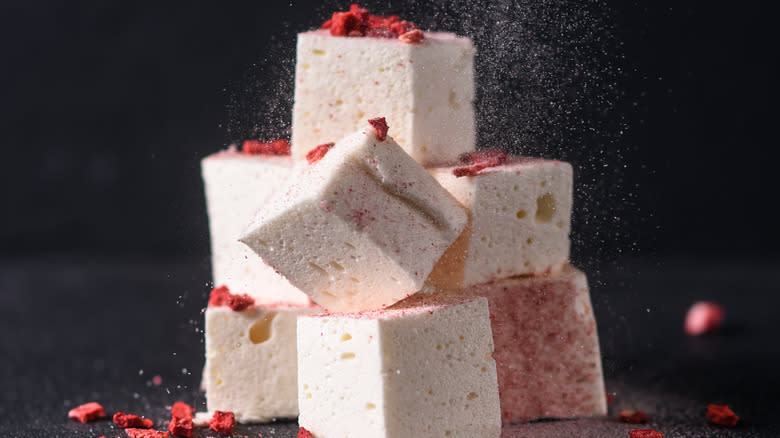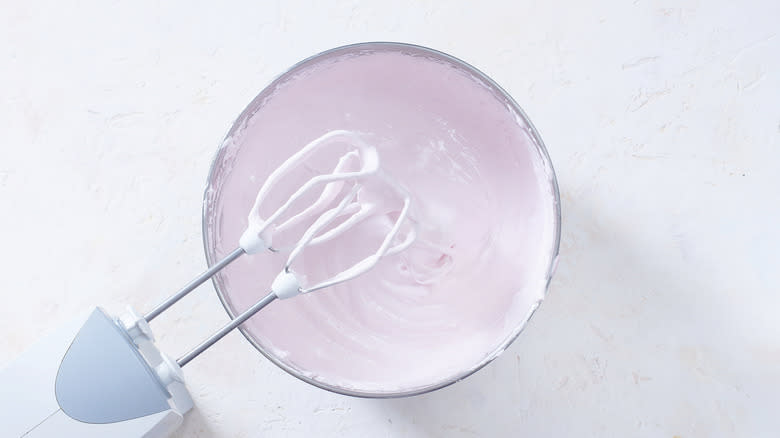Do Any Mix-Ins Ruin Marshmallows' Texture? We Asked An Expert Baker

We may receive a commission on purchases made from links.
Mixing in some extra sweet treats can really elevate your homemade marshmallows, but getting the texture right is a subtle science. Jessie Sheehan, celebrated cookbook author, recipe developer, baker, and host of the number-one baking podcast in the U.S., "She's My Cherry Pie", shared some of her mix-in tips with Mashed. Sheehan's website is packed with marshmallow recipes, so it's fair to say she knows her fluff.
There are plenty of great ingredients you can use as mix-ins — Sheehan recommends "chocolate chips or mini M&M's" as tasty extras, while something like canned pumpkin can totally transform your marshmallows' appearance. Sheehan does say, however, that you should "be careful when folding in" your chosen ingredient, particularly if it's something chocolate-based, as it will likely "melt a bit in the marshie batter and as you stir." If you allow your ingredients to melt too much, she says, "your marshies might end up a little streaky."
If you want something both boozy and sweet, you can try adding alcohol to your batter. While Sheehan agrees that marshmallows can benefit from any alcohol, you need to be mindful of your measurements. "Be careful of adding too much booze," she says, as some drinks, like high-proof spirits, can react with the gelatin and potentially denature it. Gelatin is responsible for marshmallows' buoyant texture, and without it, you're essentially doomed to a gooey mess.
Read more: Ingredients To Take Your Scrambled Eggs To The Next Level
Size And Temperature Are Keys To A Great Mix-In

The marshmallow-making process is already quite finicky. In particular, the whipping stage requires a lot of care and attention, and it's where most home bakers slip up. If you're adding a mix-in to your marshmallows, you need to make doubly sure that you haven't under-whipped the batter. If you have, it'll be too warm and soggy, resulting in the melting (and consequent streaking) of your extras. That's why, according to Jessie Sheehan, "mix-ins should be added once the batter has tripled in size [and] is cool and fluffy and voluminous."
This size increase means that the whipping process has sufficiently aerated the batter; the resulting air pockets will greatly expand the marshmallows and create the treats' desired foamy appearance. Adding your mix-ins after you've completed this step benefits your marshmallows' consistency, as by this point, the batter should be around room temperature. This will stop meltable ingredients from melting, thus keeping your texture safe.
Read the original article on Mashed

